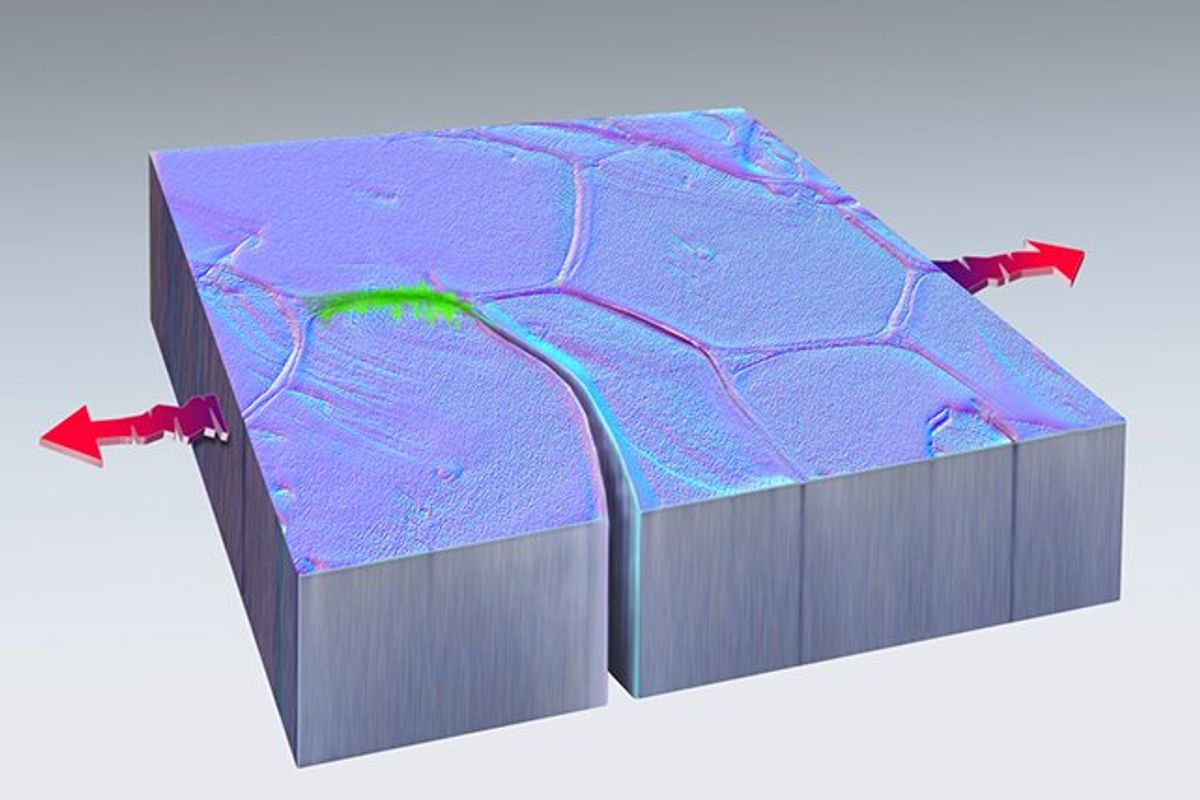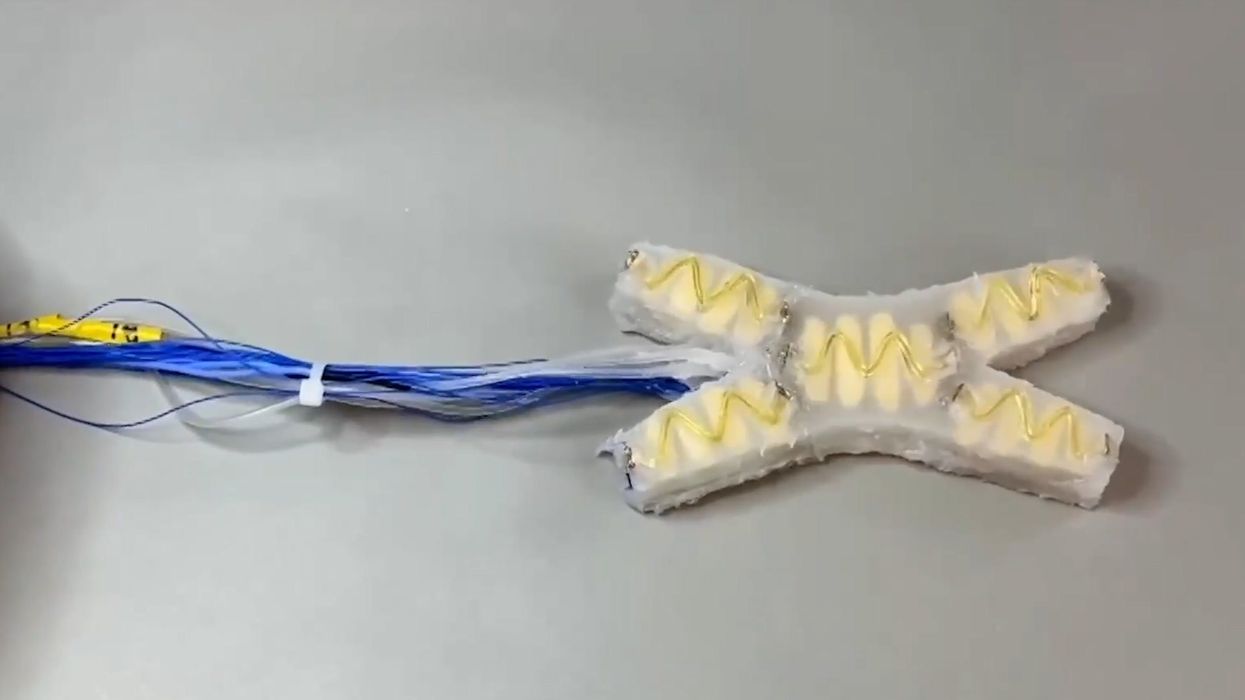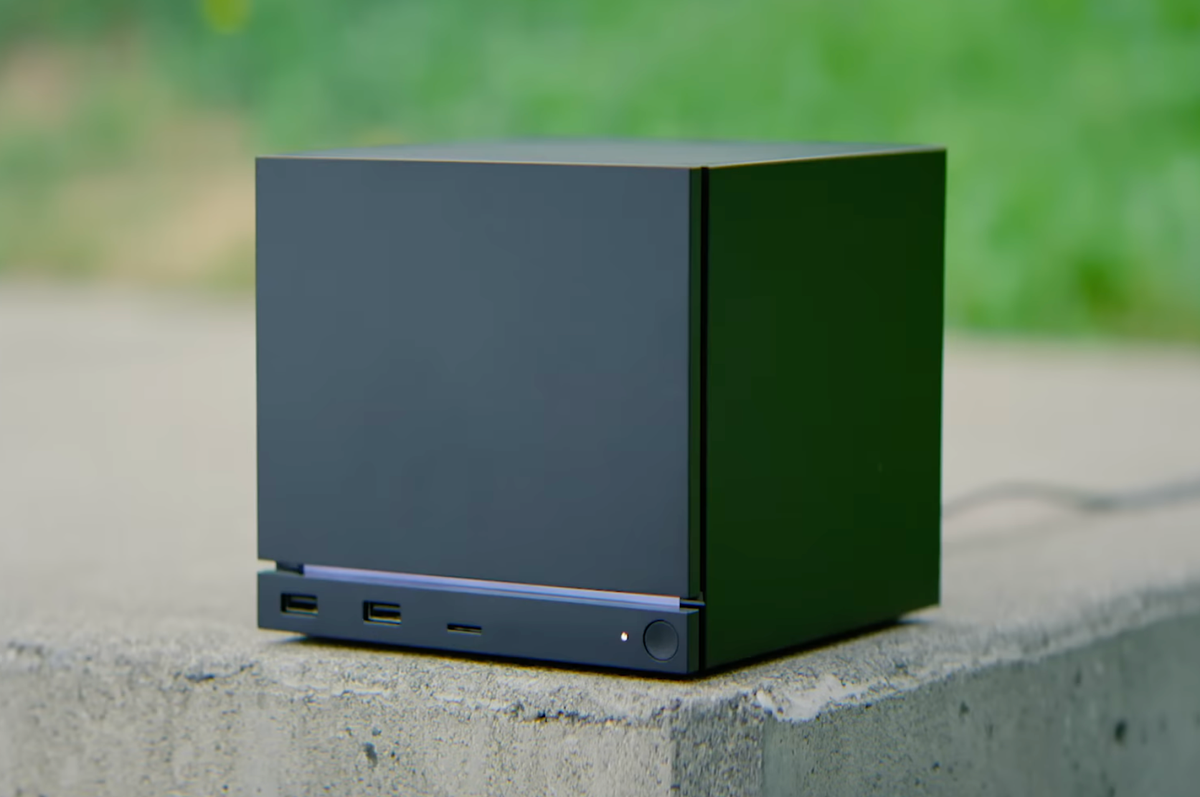Ellie Abraham
Dec 05, 2023
Terminator-style self-healing robot detects damage and mends itself on the spot
SWNS
A cracked piece of metal appears to have “healed” itself, leaving experts astonished.
The groundbreaking scientific observation was made by a team from Sandia National Laboratories and Texas A&M University, who were testing the resilience of an ultra-thin piece of platinum.
The researchers watched, dumbfounded, as a crack in the metal started to fuse back together, in a development which could fundamentally change the future of engineering,
The team published their study in July, explaining that they had used a specialised transmission electron microscope technique to tug at each end of the 40-nanometre-thick piece of platinum which they suspended inside a vacuum.
This pulling occurred 200 times per second, causing microscopic breaks in the metal known as fatigue damage.
Such strains commonly occur as a result of repeated stress and motion, leading to microscopic cracks that eventually cause machines and structures to break, as Science Alert, notes.
Astonishingly, after around 40 minutes of observation, one section of the crack began to mend itself before starting again in a different direction.

“This was absolutely stunning to watch first-hand,” scientist Brad Boyce, of Sandia National Laboratories, said in a statement.
“We certainly weren't looking for it. What we have confirmed is that metals have their own intrinsic, natural ability to heal themselves, at least in the case of fatigue damage at the nanoscale.”
While the preliminary results are exciting, experts are now focused on determining how automatic self-healing occurs, and how that knowledge can be used in engineering.
One promising aspect of the research is that auto-mending occurred at room temperature, even though metals usually require lots of heat to change form.
Nevertheless, the experiment was carried out in a vacuum, so it's unclear whether the same phenomenon could take place in conventional metals in a normal environment.
Still, the experts remain optimistic.
"My hope is that this finding will encourage materials researchers to consider that, under the right circumstances, materials can do things we never expected," added Texas A&M professor Michael Demkowicz.
Back in 2013, Demkowicz published a theory, based on computer simulations, that metals should be able to weld shut cracks that had been formed by wear and tear.
It took 10 years for him to be proved right, and he "was very glad to hear it, of course."
Sign up for our free Indy100 weekly newsletter
How to join the indy100's free WhatsApp channel
Have your say in our news democracy. Click the upvote icon at the top of the page to help raise this article through the indy100 rankings
Top 100
The Conversation (0)













